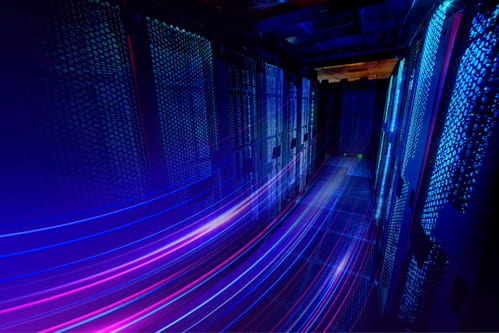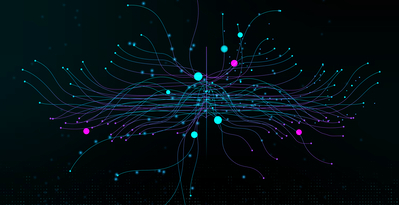Impact of AI on Data Anonymization
3AI April 25, 2023

Featured Article:
Author: Mohan Khilariwal, DGM, Data Engineering, Analytics and Data Science, HCL Technologies
Data anonymization has become much more critical as we are into the era where data sharing is becoming a necessity in order to serve the customer, new business opportunities, Governments want to take help from the industry to serve its people better. But for doing all this it’s necessary to safeguard the identity of the individuals or entities. Such data is known as Personal Identification data.
There are various techniques for data anonymization in practice like:
- Data masking: – Data masking is a technique used to protect sensitive information by hiding or replacing it with fictitious data. It is a security measure that is used to safeguard confidential information, such as personally identifiable information (PII), financial information, and other sensitive data.
Data masking is accomplished by replacing sensitive data with fictitious data that has the same format and structure but does not contain the actual sensitive information. For example, a social security number could be masked by replacing the first five digits with asterisks, so that only the last four digits are visible. This way, the sensitive data remains hidden and protected, while the non-sensitive data can still be used for testing, analysis, or other purposes.
Data masking is commonly used in industries such as healthcare, finance, and retail, where sensitive data is collected and processed on a regular basis. It helps to ensure compliance with regulations and prevent data breaches or unauthorized access to sensitive information. - Pseudonymization:- Pseudonymization is a data privacy technique used to protect personal information by replacing identifying fields with pseudonyms or fake names, numbers or codes. The purpose of pseudonymization is to make it more difficult to identify individuals in a data set, while still allowing the data to be used for research or statistical analysis.
Pseudonymization differs from data masking in that it doesn’t replace sensitive data with fictitious data. Instead, it replaces identifying information with a pseudonym that is unique to each individual, but not directly identifiable. For example, a patient’s name might be replaced with a randomly generated code, which can be used to link their medical records without revealing their identity.
Pseudonymization is often used in situations where data needs to be shared or analyzed, but strict privacy regulations prevent the sharing of personally identifiable information. This technique helps to protect individuals’ privacy while still allowing organizations to use the data for research or statistical purposes. Pseudonymization is also considered to be a reversible process, meaning that the original data can be restored if needed. - Synthetic data:- Synthetic data is artificially generated data that is designed to mimic the statistical properties of real-world data. Synthetic data is created using algorithms or other computational methods, and is often used when real-world data is not available or is too sensitive to be used for certain purposes.
Synthetic data can be used for a variety of purposes, including data analysis, machine learning, and testing. For example, synthetic data can be used to train machine learning models without exposing sensitive information or violating privacy regulations. Synthetic data can also be used to test and improve algorithms or software applications without the risk of damaging real-world data.
There are several techniques used to generate synthetic data, including generative adversarial networks (GANs), variational autoencoders (VAEs), and Monte Carlo simulations. These techniques can generate data that closely approximates the statistical properties of real-world data, while preserving privacy and data security.Synthetic data is becoming increasingly popular as organizations seek to protect sensitive data and comply with privacy regulations, while still being able to perform data analysis and use advanced technologies like machine learning.
- Generalization:- Generalization is a data anonymization technique used to protect sensitive information by reducing the level of detail or specificity of data. It involves replacing specific values or data points with more general or abstract values, without changing the overall meaning or statistical properties of the data.
For example, instead of using a person’s exact age, their age may be generalized to a range of ages, such as “20-30” or “30-40”. This technique can also be applied to other data points, such as location, occupation, or income.
Generalization is commonly used in situations where data needs to be shared or analyzed, but strict privacy regulations prevent the sharing of personally identifiable information. This technique helps to protect individuals’ privacy while still allowing organizations to use the data for research or statistical purposes.
However, it’s important to note that generalization can lead to a loss of precision and accuracy in the data, which can affect the quality of the analysis or conclusions drawn from the data. Therefore, careful consideration should be given to the level of generalization applied to the data, to ensure that it remains useful for its intended purpose. - Data perturbation:- Data perturbation is a data anonymization technique used to protect sensitive information by adding random noise or errors to the data. The purpose of data perturbation is to make it more difficult to identify individuals in a data set, while still allowing the data to be used for research or statistical analysis.
Data perturbation involves adding small amounts of random noise or errors to the data, which can help to protect the privacy of individuals by making it more difficult to identify specific data points or patterns. For example, adding a small amount of random noise to the values of an individual’s medical records can help to protect their privacy while still allowing the data to be used for research or analysis.
Data perturbation can be applied to different types of data, including numerical data, categorical data, and text data. There are several techniques used to perform data perturbation, including random sampling, adding random noise or errors, and applying probability distributions.
Data perturbation is becoming increasingly popular as organizations seek to protect sensitive data and comply with privacy regulations, while still being able to perform data analysis and use advanced technologies like machine learning. However, it’s important to note that data perturbation can affect the accuracy and reliability of the data, and careful consideration should be given to the level of perturbation applied to the data. - Data Swapping:- Data swapping is a data anonymization technique used to protect sensitive information by exchanging or swapping data between individuals or entities. The purpose of data swapping is to make it more difficult to identify individuals in a data set, while still allowing the data to be used for research or statistical analysis.
Data swapping involves exchanging or swapping data points between individuals or entities, while maintaining the overall statistical properties of the data. For example, in a medical data set, the data of patients could be swapped with each other, while maintaining the same distribution of ages, genders, and other relevant variables.
Data swapping can be applied to different types of data, including numerical data, categorical data, and text data. There are several techniques used to perform data swapping, including randomization, clustering, and perturbation.
Data swapping is becoming increasingly popular as organizations seek to protect sensitive data and comply with privacy regulations, while still being able to perform data analysis and use advanced technologies like machine learning. However, it’s important to note that data swapping can affect the accuracy and reliability of the data, and careful consideration should be given to the level of swapping applied to the data
None of the above techniques is a full proof for data anonymization. Reason being that in some cases data distribution gets disturbed and in some cases data is so simple that even after data anonymization it’s easy to identify the PIIs in it. Hence depending upon the use case, a combination of above techniques might be required for creating anonymized data and maintaining statistical precision and data confidentiality. There are various tools available in the market which provide the data anonymization platforms but again none of them is valid for all kinds of data sets. So for data anonymization there is always a tradeoff between usages of the data and the privacy of it.
In view of the above it looks like synthetic data anonymization techniques might eventually win in the race as a lot of research is going on in this space. We already have few of the useful synthetic data creation algorithms like SDV, GAN, K-Anonymity etc.
Primarily synthetic data creation algorithms can be divided in two categories:
- Table based data anonymization algorithms: (paper An Extensive Study on Data Anonymization Algorithms Based on K-Anonymity)
| Privacy Model | Identity Revelation | Feature Disclosure | Table Linkage |
| k-Anonymity | Yes | ||
| MultiR-k-Anonymity | Yes | ||
| l-Diversity | Yes | ||
| (k,e)-Anonymity | Yes | ||
| (a,k)-Anonymity | Yes | Yes | |
| t-Closeness | Yes | ||
| (X,Y) Privacy | Yes | Yes | |
| Differential Privacy | Yes | ||
| (d,y) Privacy | Yes | ||
| Distributional Privacy | Yes |
2. Image/video data anonymization algorithms:
GAN-Based Data Augmentation and Anonymization for Skin-Lesion Analysis. Despite the growing availability of high-quality public datasets, the lack of training samples is still one of the main challenges of deep-learning for skin lesion analysis. This algorithm is primarily used for synthesizing samples indistinguishable from real images like in Healthcare /medical images data.
This is a very promising field and it’s going to be an integral part of the Data Engineering services. Few countries and industries have the Data Privacy laws like HIPAA, PCI-DES, GDPR. AI is going to help in this space in a big way in order to enforce these laws and protect privacy and enable data sharing for the larger good of the industry and the people. Need of the hour is to have some algorithm to anonymize the data based on the context and usages of data in real time without compromising data distribution and statistical distribution.
The impact of AI on data anonymization has been significant and has introduced both benefits and challenges. Some of the key impacts of AI on data anonymization include:
1. Improved anonymization techniques: AI has enabled the development of advanced anonymization techniques, such as generative adversarial networks (GANs) and variational autoencoders (VAEs), which can generate synthetic data that closely approximates the statistical properties of real-world data. These techniques can improve the effectiveness of data anonymization by creating synthetic data that is difficult to re-identify, while preserving the utility and analytical value of the data.
2. Enhanced privacy protection: AI can be used to automatically identify and classify sensitive data in large datasets, allowing organizations to better understand and protect privacy risks. AI algorithms can analyze data patterns, detect potential identifiers, and suggest appropriate anonymization techniques to mitigate privacy risks. This can help organizations comply with privacy regulations and protect sensitive information from unauthorized access or misuse.
3. Increased scalability and efficiency: AI-powered data anonymization tools can process large volumes of data more quickly and efficiently than manual methods. AI algorithms can automate the process of identifying sensitive data, applying anonymization techniques, and validating the effectiveness of the anonymization. This can save time and resources, especially when dealing with large datasets or real-time data streams.
4. Enhanced utility of anonymized data: AI can help improve the utility of anonymized data by generating synthetic data that retains the statistical properties of real-world data. This can enable organizations to perform meaningful analysis, develop accurate models, and derive valuable insights from anonymized data, without violating privacy regulations or exposing sensitive information.
5. Ethical considerations: The use of AI in data anonymization raises ethical considerations, such as the potential for unintended biases in the synthetic data generated by AI algorithms. Bias in the data used for anonymization can result in biased synthetic data, which may impact the fairness and accuracy of the results obtained from the anonymized data. Therefore, careful consideration and monitoring of AI algorithms used for data anonymization is necessary to ensure ethical and unbiased use of AI in the process.
6. Adversarial attacks: AI-powered data anonymization techniques may be vulnerable to adversarial attacks, where malicious actors use AI algorithms to reverse engineer or re-identify anonymized data. Adversarial attacks can compromise the privacy of individuals and undermine the effectiveness of data anonymization. Therefore, robust security measures and ongoing monitoring are required to protect against potential adversarial attacks.
In conclusion, AI has had a significant impact on data anonymization, offering improved anonymization techniques, enhanced privacy protection, increased scalability and efficiency, and enhanced utility of anonymized data. However, ethical considerations and the risk of adversarial attacks highlight the need for careful implementation, monitoring, and evaluation of AI-powered data anonymization techniques to ensure privacy protection and compliance with applicable regulations
Title picture: freepik.com






